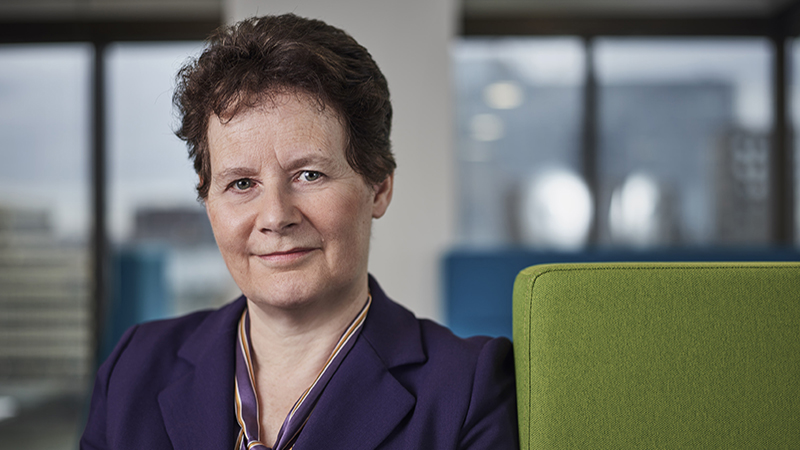The fates of individual emerging markets are diverging. It is no longer possible to assume that Brazil, Russia, India and China, for example, are part of the same inter-dependent whole.
Their economic trajectory is increasingly determined by whether they are subject to political reform, whether they are commodity importers or exporters, and whether they are vulnerable to the strength of the dollar.
Last year, this disparity was all too evident in returns for investors:
The MSCI India index has risen 34.5% over the past 12 months, as Prime Minister Narendra Modi swept to power and began his ambitious programme of much-needed economic reform.
The MSCI China index climbed 16.4%, with the Indonesia, Philippines and Thailand markets putting in a similarly robust performance.
At the other end of the scale was Brazil, where the re-election of Dilma Rouseff was greeted unenthusiastically by markets. The index has fallen 14.4% as investors have digested not only the impact of lower commodity prices on the country’s major companies, but also the impact of the Petrobras scandal on the government.
Similar weakness has been seen across much of Latin America and in Russia, which has now become the poster child for poor economic governance and corruption.
Get active
For Anthony Cragg, manager of the Wells Fargo China Equity and Emerging Market Equity Income funds, this means that emerging market investors need to be genuinely active above all.
He believes that a passive or quasipassive approach to emerging market investment can introduce significant risks, particularly now that there is greater divergence between the fortunes of different countries.
He points out that many investors continue to hold Petrobras, although with a reduced position, simply because it continues to make up a significant part of the Brazilian index. This, he suggests, is not true active management.
The group holds no Petrobras, having decided towards the end of last year that its poor governance practices made it uninvestable.
The divergence between different countries also means that macroeconomic analysis remains important as a risk management tool.
Cragg is clear that he is a stock-picker first and foremost, but says that macroeconomic analysis is vital for avoiding problems: “We derive around 80% of our excess return from stockpicking,” he says. “Macroeconomic analysis does not guide stock selection, but is used more to avoid disasters, where there is a risk of a disastrous devaluation – a coup d’état, riots etc. We want to make sure that nothing is going to ‘bite’ us.”
Traps abound
Cragg also believes that valuations can be deceptive.
He says that Russia may look cheap, but it has looked cheap for a long time and investors have yet to make money: “It is important to look at the history. Korea, for example, has been cheap for many years, but it is a classic value trap. There are others that are cheap but where there are serious problems. Russia is extremely cheap, for example, but its problems are severe. The Ukrainian situation is extremely sad, but it is not the extent of Russia’s difficulties: there are corporate governance issues, government interference and then the lower oil price as well.
“The current account balance depends on oil at $85 a barrel to be in surplus. Taking oil and gas out of the equation, there aren’t a lot of attractive companies either. In these areas, the low valuations mean less. There are serious structural problems.”
In terms of individual stock selection, Cragg says he uses ‘old-school stock-picking techniques’, looking for qualities such as balance sheet strength and cash-flow generation.
Equally, dividend yield is vital. Ignoring it, he says, is “like there being three piles of money on the table and deliberately taking just two. All other things being equal – where there is good management, good profit margins and cash-flow generation – we find that investing in dividend-paying companies is like investing with a constant tailwind.”
Bigger payouts
Seven years ago, when the group’s dividend fund launched, the dividend payout ratio for emerging market companies was around 20%. It is now 35%. Developed markets are at 50% so Cragg believes there could be some way to go.
“Companies that didn’t used to pay, now pay, sometimes under pressure from emerging market governments: China, for example, told its companies to improve their payouts. India also lent on its companies to pay higher dividend.” Equally, there is increasing diversity on the sectors.
“It is not all REITs and telecoms. We can buy banks, insurance, technology and consumer stocks.”
The funds he runs have natural sector preferences, though he is reluctant to call them biases: “We like ‘quality of life’ businesses, and those providing soft services.” This includes the emergence of the middle class, though not as it manifests itself in Rolex watches or BMWs, but more in insurance or financial products, elderly care and educational provision.
These are the structural growth industries of the future for emerging markets, he believes.
He is supported by a team of analysts, each natives of the region they cover.
The group also run specialist country mandates, economic and social governance mandates, and income mandates. Cragg says that each skillset helps inform the others.
The group’s expertise extends to frontier markets, but he believes there are better opportunities in emerging markets in the current environment.
Cheap China
At the moment, Cragg believes the Chinese market offers a lot of attractive opportunities.
He says: “China is genuinely cheap. It is on a forward price-to-earnings ratio of 9x. It is cheap relative to its history, to the rest of Asia, to emerging markets and even to the European markets. It is simply undervalued. The only explanation is that it’s about to blow up, and I don’t believe that.”
It is the debt stored up by local governments that has many China bears so worried, but Cragg points out the vast majority of debt is domestically owned and that the country is not in hoc to foreign creditors, unlike the US.
The Chinese government has a surplus of around $4bn.
He likens the situation to the son of a billionaire with a £2,000 overdraft. It may be a problem, but the overall picture is not worrying.
Certainly, the growth rate is slowing and Cragg believes this is to be welcomed: “People cannot expect the world’s second-largest economy to grow at 7% or even at 5%. Too much is made of the slowdown, it is not a negative, but healthy. Lower sustainable growth is better than out-of-control growth. I believe China can successfully avoid a hard landing.”
While he admits the reform agenda has slowed growth, as has the anti- corruption drive and closing coal plants, he sees this as the country moving up the technology curve, a necessary part of its development.
Walk the talk
China also benefits from weaker commodity prices, which is another key theme running through Cragg’s portfolios at the moment.
“The fortunes of individual emerging markets are very much determined by whether they are an energy importer or exporter in the current environment. We prefer the former – India, China, Singapore and Korea,” he says.
Reform is another key criteria for the Wells Fargo team: “Mexico, India, China are all strong examples of countries not simply posturing, but actually delivering on reform.”
His verdict on emerging markets as a whole?
“It’s not whether emerging markets are good or bad, they are both. It is possible to make good returns in emerging markets, through active management. Last year, for example, investors would have lost their shirts in Russia and Brazil, but made excellent returns in the Philippines or China.”
He believes 2015 will be no different.
Emerging markets fortunes are diverging and investors need to be on the right side.











